
Zedcor Wholly Owned/PhotoObjects.net/Getty Images
Scones, once synonymous with British teas, have become a common pastry at breakfast tables in the United States. Similar to baking powder biscuits, scones contain eggs, butter, cream and a bit of sugar, plus any flavorings, such as currants, oatmeal or even dried lavender. For tender, but crisp, scones, make the dough quickly, cut it into wedges and cook it at high heat. Serve scones warm with butter, clotted cream or chunky jam.
General Guidelines
One of the secrets to baking beautiful scones is to treat the dough with a light hand and to get it into a hot oven -- fast. A hot oven, set at around 425 degrees Fahrenheit, causes the scones to rise quickly with the help of the baking powder. This quick rise creates a tender, but golden crust, and a light, but sturdy, texture.
Convection Oven
Convection ovens are ideal for baking because they circulate air freely throughout the oven. Baked goods bake more evenly, with a golden brown crust and tender interior. Because convection ovens are so efficient, you can bake goods at a lower temperature and for less time than in a standard oven. In general, reduce the heat by 25 degrees if you have a convection oven and reduce the time by five to 10 minutes. If you set the convection oven at 425 F, you risk browning the outside of the scones too quickly, while the dough is still raw inside.
Bakeware
How high you set the oven temperature for scones depends in part on the type of cookware you're using. Shiny aluminum baking sheets are ideal for making scones because they cook and brown baked goods evenly. If you're using this type of pan, set your oven for 425 F. You can also use glass bakeware and dark, non-stick metal bakeware for baking scones. These types of baking sheets tend to brown baked goods quickly. You want to watch that the bottoms and edges do not become too brown. Reduce the heat by 25 degrees and watch closely.
Method
Scones are the ideal breakfast pastry because you can whip up the dough in less than 10 minutes, and the less you mess with it, the better. Unlike some muffins and cakes, scones don't need ingredients at room temperature. Cold ingredients are actually better, because they help create the flaky layers. Simply combine flour, sugar, baking powder and salt in a bowl and cut in the butter until the mixture looks like coarse meal. Add the cream and eggs, and stir to make a stiff dough. Mold the dough into a ½-inch thick circle, cut into wedges and you're ready to go. Because scones have quite a bit of butter, you don't even need to grease the pan.
Related Articles
Easy Homemade Chocolate Chip Cookies ...
Easy Banana Bread Recipe
Why Do My Biscuits Turn Out Hard and ...
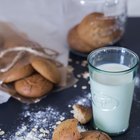
How to Make Soft Oatmeal Cookies

How to Make Scones

How to Make Mexican Wedding Cookies

Shortbread Cookie Recipe
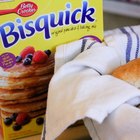
How to Make Bisquick Biscuits

Can I Make Monkey Bread the Night ...
Why Are My Biscuits Always Flat?
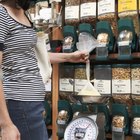
The Best Ways to Fry Hush Puppies
No Bake Cookies With Quick Oats Recipe
How to Make Homemade Ham and Cheese Hot ...

How to Make Easy Cinnamon Rolls in 20 ...
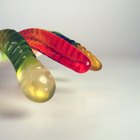
Will Gummy Worms Melt If Baked in ...
A Substitute for Meringue
Easy Vanilla Cupcake Recipe

Things to Cook in a Toaster Oven in ...
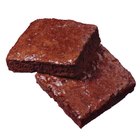
How to Fry Brownies

Softened vs. Melted Butter When Baking
References
- Essentials of Baking; Cathy Burgett, et al; 2003
- Quaker: Baking Equipment
Writer Bio
Julie Christensen is a food writer, caterer, and mom-chef. She's the creator of MarmaladeMom.org, dedicated to family fun and delicious food, and released a book titled "More Than Pot Roast: Fast, Fresh Slow Cooker Recipes."
Photo Credits
Zedcor Wholly Owned/PhotoObjects.net/Getty Images